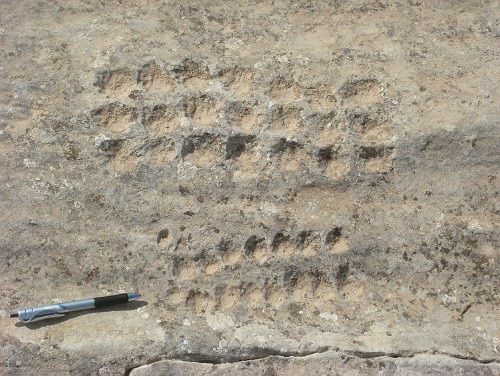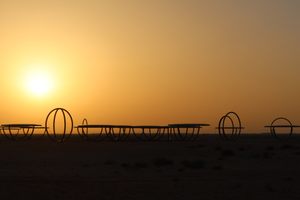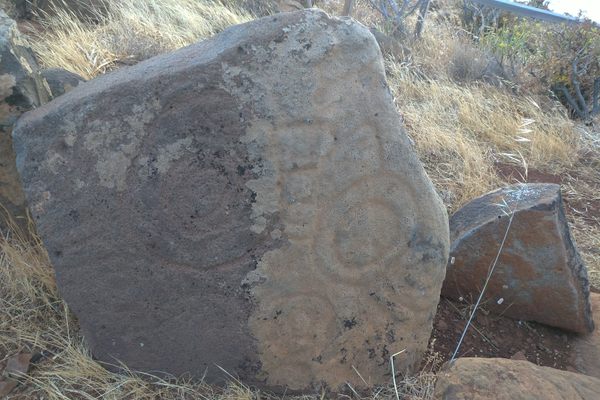About
Al Jassasiya may appear to be just a deserted quarry—and it is—but look carefully and you’ll find a wealth of mysterious petroglyphs. First reported in 1956 by Danish archaeologist Peter Glob, a total of more than 900 rock carvings can be found at this surprising site.
The petroglyphs of Al Jassasiya were first studied in 1964. The most common motifs are round holes reminiscent of cup holders, and what they represent is unknown. Some are carved in seemingly random order, while others are in patterns, such as rows, double rows, and rosettes. Aside from the round holes, there are also carvings of dhows, fish, scorpions, ostriches, and quadrupeds.
There is no unanimous consensus as to the age of these petroglyphs. The most conservative estimates maintain they are a few centuries old, while more bold estimates suggest they date back millennia. The purpose or symbolism of the petroglyphs is also a source of speculation. It's been suggested the round holes could have been used to store pearls, which used to be traded extensively in the region, or perhaps to play a board game. An alternative view is that the positioning of the round holes represents constellations, but even if this were true, the mystery remains as to why they were created in the first place.
Related Tags
Know Before You Go
Drive north of Doha on Al Shamal Road and take the Ras Laffan exit. Follow the road for 8 km and take a turn left. Al Jassasiya is about 3 km along this road. The main site is on the left, but there are also some petroglyphs on the right of the main road. The site is fenced off but there are several gates to enter. Once you’re inside, there are no obvious signs as to where the petroglyphs can be found. Most of them are located along the ridge that runs along the main road.
Published
January 10, 2019


























































